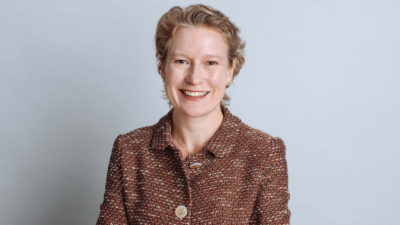Multi-asset partnership trend for all shapes and sizes
(pictured: Lori Holland)
Multi-asset investing via strategic partnerships with managers, being pioneered in Australia by Sunsuper, is branching out in the US and elsewhere across the spectrum of fund sizes and types.
In Australia last week to present at Neuberger Berman client conferences in Sydney and Melbourne were several of the firm’s US-based fund managers including managing director, multi-asset class strategies, Lori Holland, and CIO of multi-asset class portfolios, Erik Knutzen.
Holland has been involved with the famous Texas Teachers (Teachers Retirement Scheme – TRS) program to a group of multi-asset managers, including Neuberger, which was decided upon just prior to the global crisis in 2007 and implemented in July 2008. The four initial Texas Teachers mandates, of US$1 billion each and followed by a smaller fifth mandate, have become the poster child for this type of investing around the world. The US$140 billion fund subsequently developed strategic partnerships for some of its private markets relationships. The website is worth a look: www.trs.state.tx.us
Holland said at a briefing in Sydney that no two multi-asset partnerships were alike. “We are asked to design and tailor strategies to very unique circumstances. Each one has different asset/liability positions. They are different sizes and have different resources,” she said.
At one end of the spectrum may be a fund like Texas Teachers – the fifth or sixth largest pension fund in the US – and at the other might be a small fund with just two full-time investment staff. One small defined benefit fund in the US appointed Neuberger to outperform its liabilities, which was a different sort of challenge, she said.
Sunsuper became the first Australian fund to go down this path last year when it appointed Neuberger and J.P. Morgan to multi-asset mandates of an unspecified size.
Both Texas Teachers and Sunsuper had been through senior management changes prior to their decisions, with Sunsuper having a new chief executive, Scott Hartley, in 2014, who was previously in charge of MLC and JANA at NAB, and a new CIO at Texas Teachers who had had experience with strategic partners before. Sunsuper also acquired a new CIO, Ian Patrick, from its consultant JANA late last year, after the multi-asset decision had been made.
In the Teachers Texas case the fund had to also work with its legislators to change the fund’s investment program to accommodate the new mandates.
It would seem that funds which go down this path have a similar mindset, if not similar structures and size. Erik Knutzen said that Neuberger was not usually the party which set the agenda in the new relationships. “Sometimes, we may suggest that a strategic partnership is not the right fit,” he said.
Even some very big funds which are known to want to control a lot of their investments directly, such as the big Chinese funds, have either adopted a partnership or are looking at it.
One would think, too, that asset consultants may be against the idea, as it seems to encroach on their traditional advice areas, especially dynamic asset allocation.
“The last thing we want to do is alienate the asset consultants,” Knutzen said. “We want to work with them.” He estimates that about 50 per cent of the funds which look at multi-asset partnerships have contracted asset consultants.
Holland said that a lot of big funds wanted to reduce the number of managers they oversee, which fits the partnership model. CalPERS announced in 2014 that it would cut out most of its hedge fund managers for this reason – their added value was not worth the administrative work from the fund’s perspective.
Fewer managers usually means lower fees because of the greater scale attached to each relationship. Multi-asset strategic partnerships usually involve a relatively low basis-points fee and a performance fee. “Bot sides want to do well out of the relationship,” she says.
Neuberger Berman has a five-person office in Melbourne, run by Paul O’Halloran and Lucas Rooney, and 18 Australian clients.










